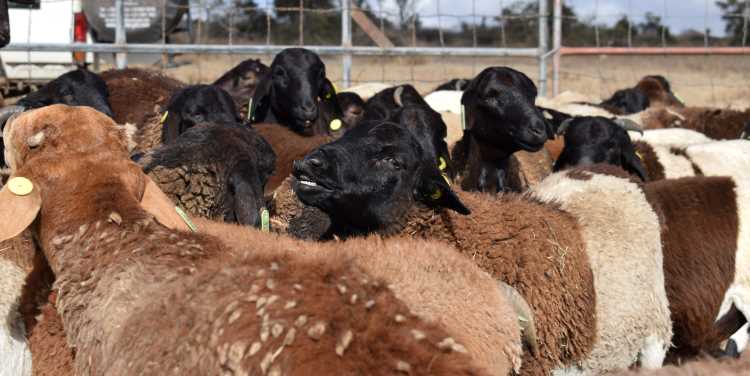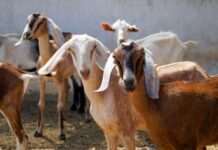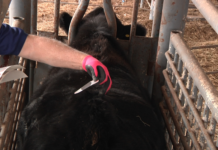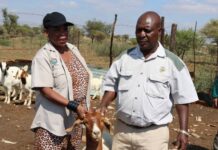Rift Valley Fever (RVF) is a viral zoonotic disease, which mainly affects livestock but also has the capacity to infect humans. Humans are susceptible to RVF virus infection via transmission from animals, but no human-to-human transmission has been reported.
Prominent across sub-Saharan Africa and the Arabian Peninsula, the disease first emerged in Kenya in 1930 and was detected outside of Africa for the first time in 2000, raising concerns of future outbreaks across Asia and Europe. It can cause severe disease in livestock such as cattle, goats and sheep, and the virus can also infect some wild animals including buffalo, and other ruminants.
Signs and symptoms
Signs of the disease in livestock include fever, listlessness, disinclination to move or eat, high rates of abortion in pregnant animals, and high rates of mortality in new-born offspring. During outbreaks, the disease has been known to kill more than 90 per cent of young animals and cause nearly 100 per cent of pregnant animals to abort their foetuses.
RVF in humans presents as a self-limiting febrile illness, but the disease can sometimes cause encephalitis (inflammation of the brain), haemorrhaging and blindness, and can even be fatal.
The disease can vary in its severity and clinical signs are different depending on the species and age of the animal, along with whether the animal is pregnant. Young lambs and goats tend to be most susceptible to the fever, with mortality rates of between 70-100%.
Livestock tend to be infected with RVF virus through infected mosquitoes, with young animals particularly vulnerable to the disease. Since first being identified in 1930, RVF has affected millions of livestock and has had a devastating impact on the livelihoods of farming communities.
Transmission and diagnosis
RVF is a vector-borne disease, transmitted by mosquitoes from infected animals to other animals and also humans. Humans can contract the disease through contact with bodily fluids or tissue of infected animals, and also from the bites of infected mosquitoes. In areas where the disease is endemic, clinical signs, insect activity, known cases in animals and humans, and specific environmental conditions often lead to RVF being suspected.
Laboratory tests using blood or tissue samples are required to diagnose infections, either through PCR (molecular detection of the virus), virus isolation, detection of antibodies to RVF virus in blood, or detection of virus antigen in tissue samples.
Preventative measures
Vaccination is a priority for preventing RVF in livestock, especially in areas prone to outbreaks. But the most widely used animal vaccines for RVF are not recommended for pregnant animals, as they risk causing abortion and malformation. No licensed vaccines to protect humans against RVF yet exist, and the disease is listed as a World Health Organization (WHO) priority.
However, together with an international team of researchers from the University of Oxford, the International Livestock Research Institute (ILRI), the Pirbright Institute and the Kenya Medical Research Institute (KEMRI)-Wellcome Trust Research Programme, I am working to develop a single cross-species vaccine for RVF.
We began by using a technique involving adenovirus – a chimpanzee respiratory virus – to expose animals to a small part of the RVF virus, which is not sufficient to cause an infection but enables the immune system to recognise it. (The same technique has been shown to be safe for human vaccination against diseases including malaria and influenza, and is currently a leading strategy for vaccine development against COVID-19).
Importantly, the immune response generated by the vaccine is different enough from that generated by a natural RVF virus infection, which means that animal health practitioners can accurately identify through testing whether an animal is vaccinated or infected.
Our early studies found that a single dose of the vaccine, termed ChAdOx1 RVF, provided 100 per cent protection against RVF in multiple livestock species in Kenya, with further livestock field trials ongoing, and human clinical trials planned in the near future. We have also shown that the vaccine can be used safely during pregnancy in livestock. We hope that bringing this pioneering cross-species vaccination into widespread use will not only protect livestock and farmers against the devastating RVF virus, but also pave the way for future One Health approaches that tackle zoonotic diseases holistically.
Forecasting via climatic monitoring systems and ongoing outbreak surveillance is effective to an extent in controlling the spread of RVF. Using remotely sensed data, for instance, can provide advance warning of climatic conditions that are favourable for mosquito breeding – including heavy rains and flooding, for instance – and enable enhanced control measures to be implemented in time.
Coordinated sharing of information is key to this, and a One Health approach that connects animal and human health practitioners is essential to protecting livestock and farmers alike.
George Warimwe is an Associate Professor at the Centre for Tropical Medicine & Global Health, University of Oxford and Group Leader at the KEMRI-Wellcome Trust Research Programme, Kenya.









